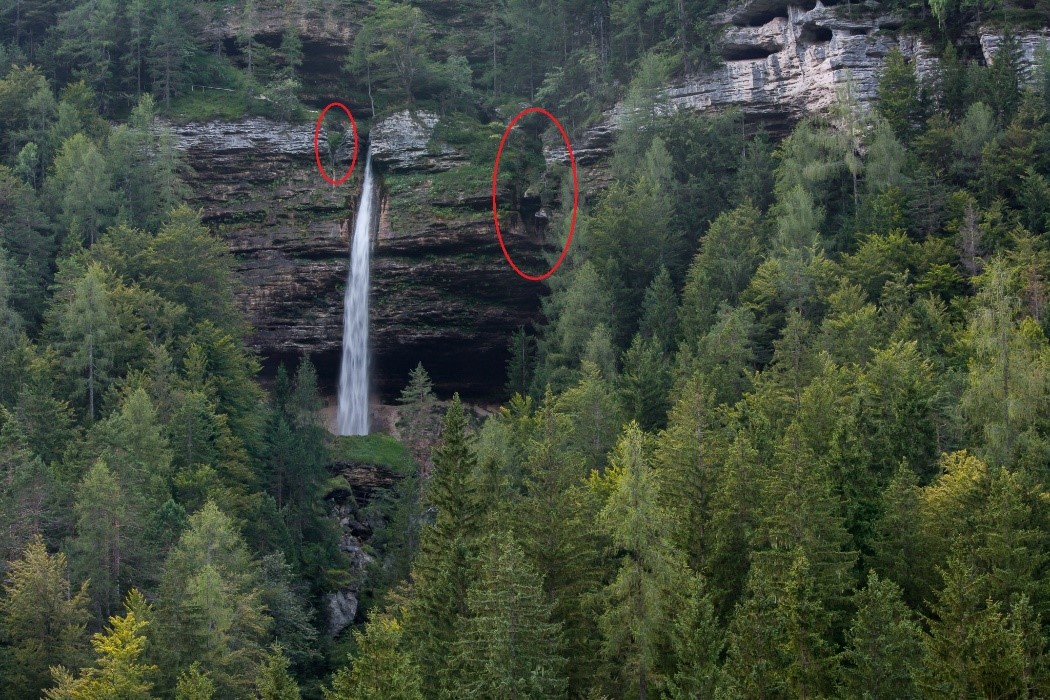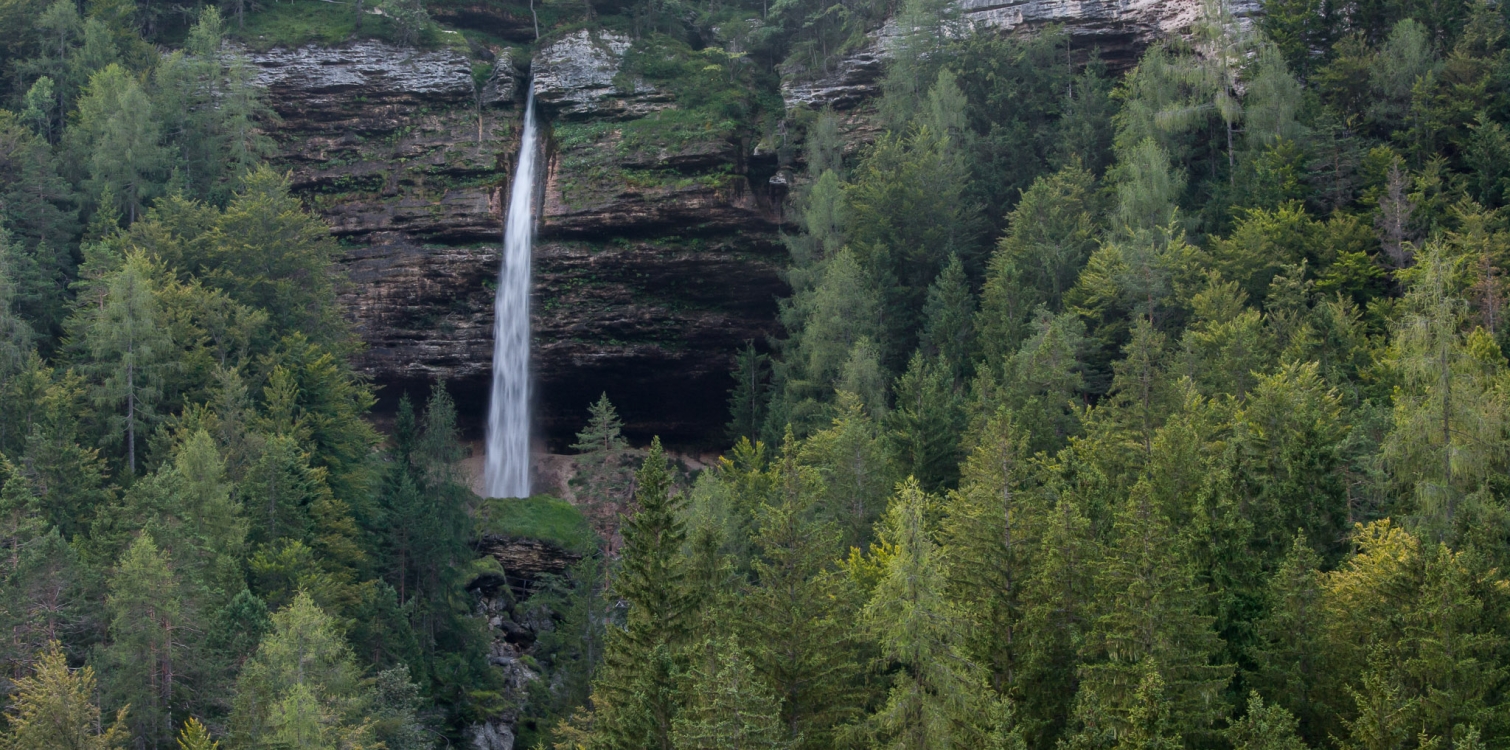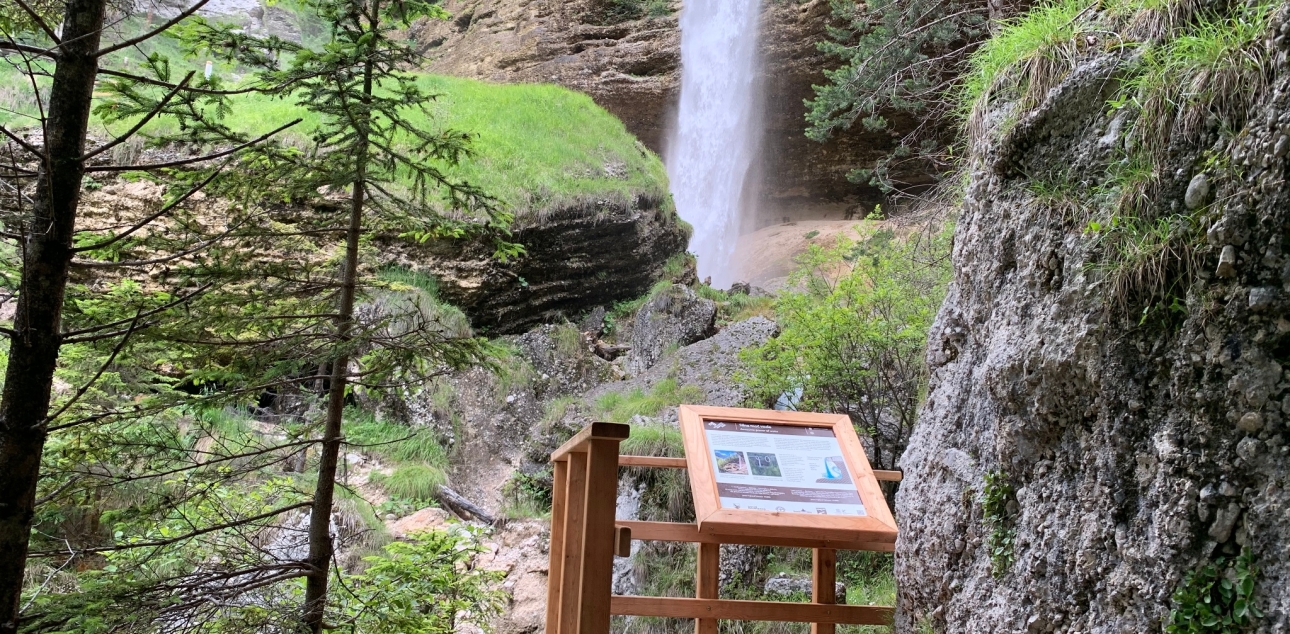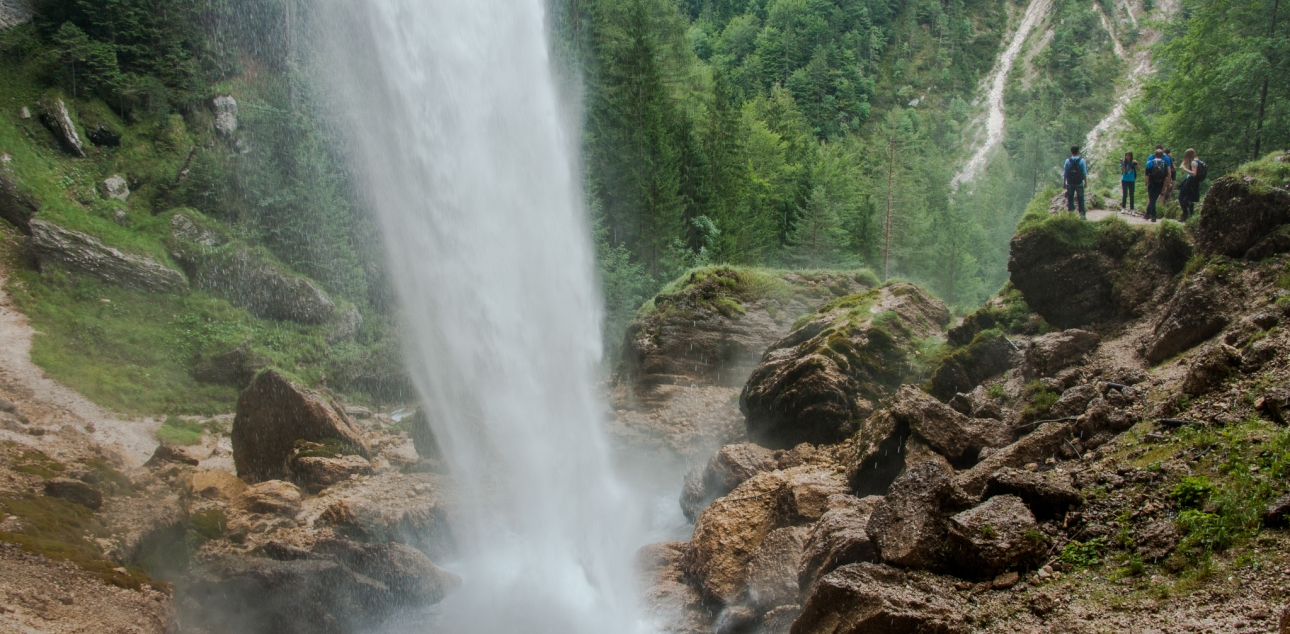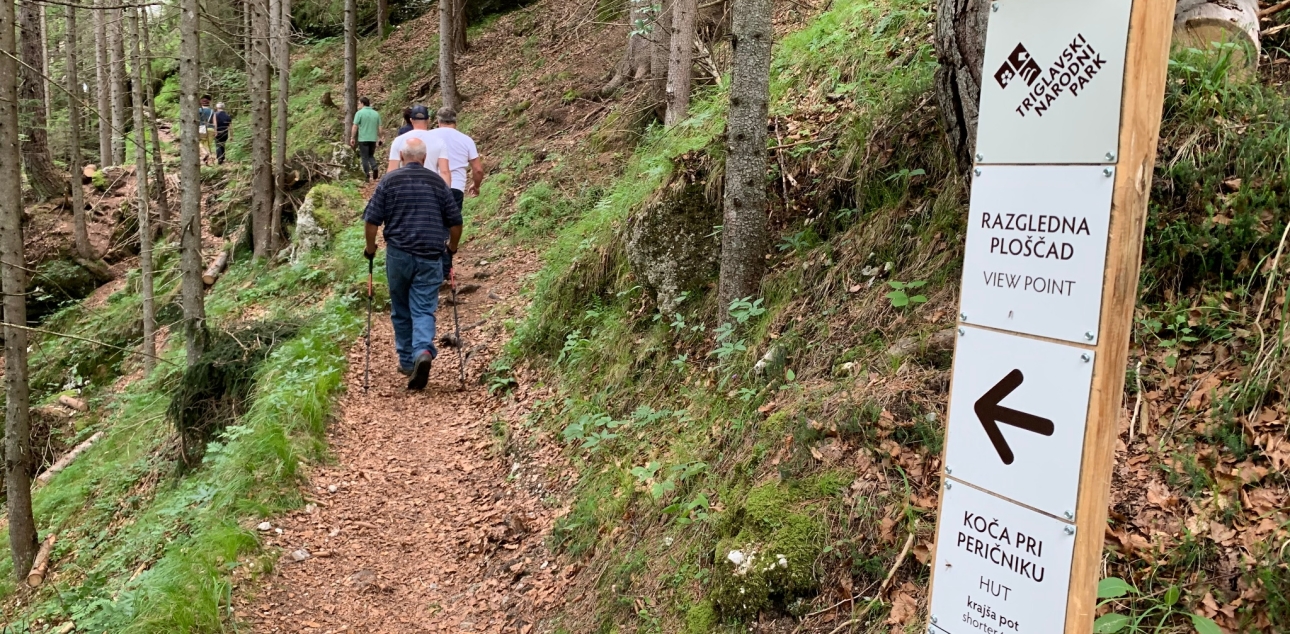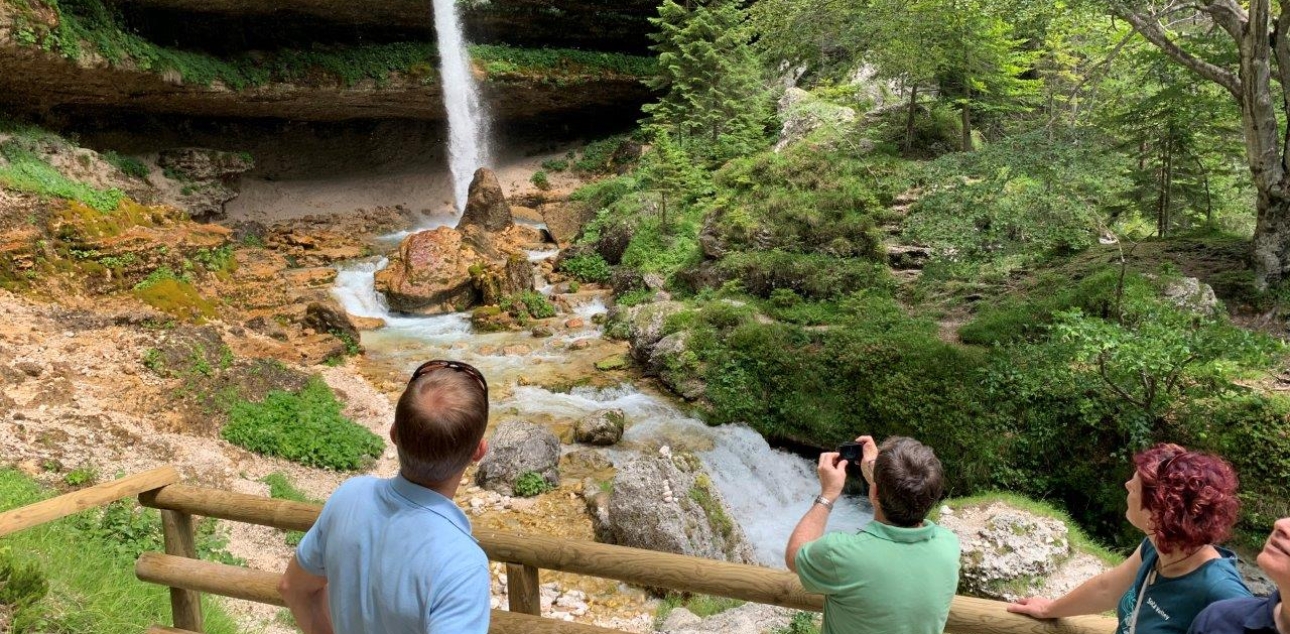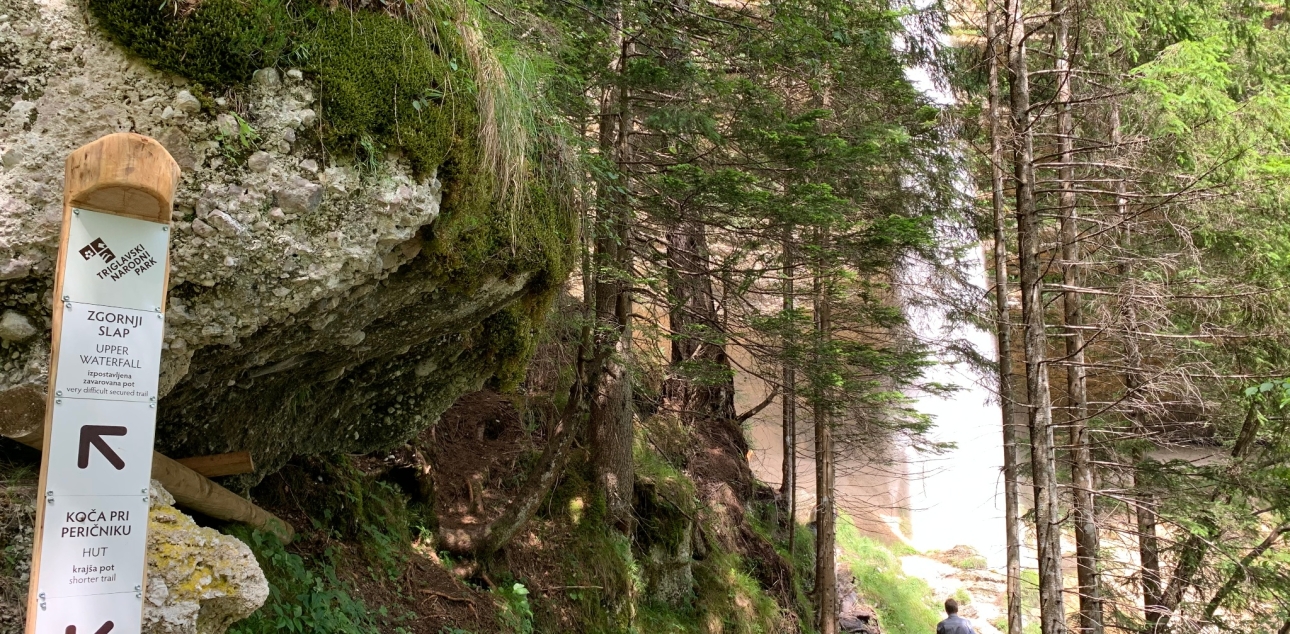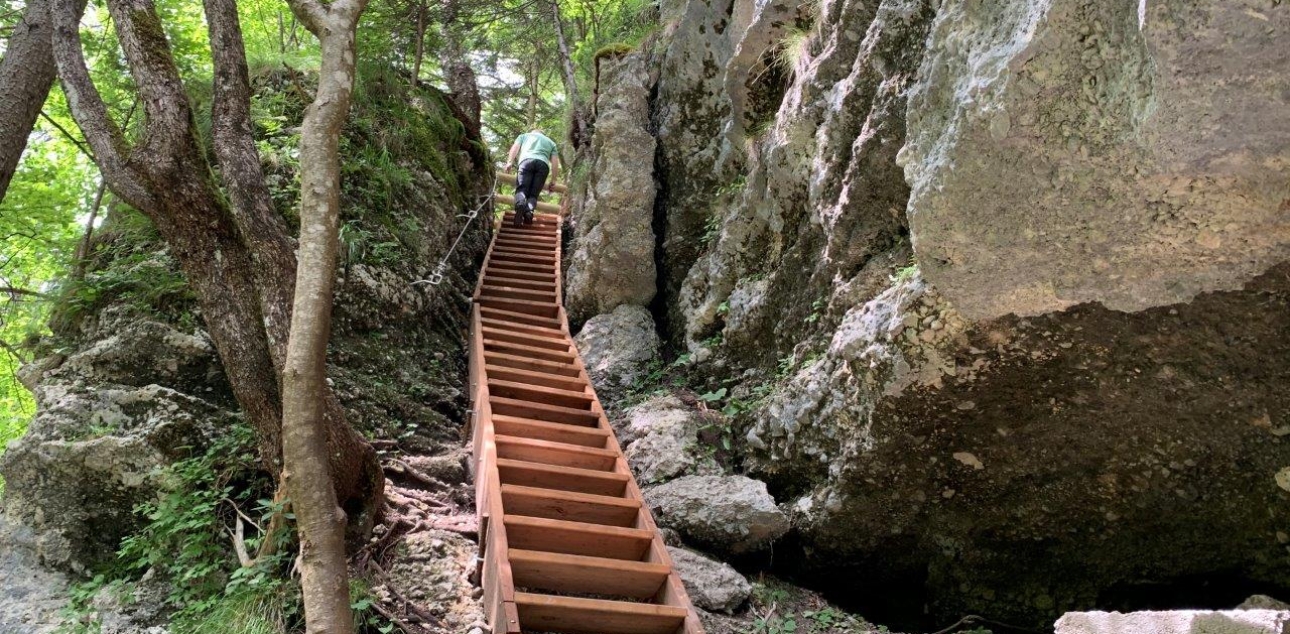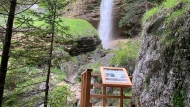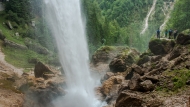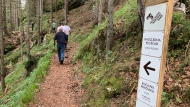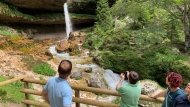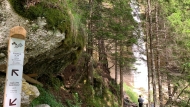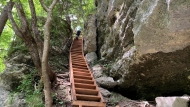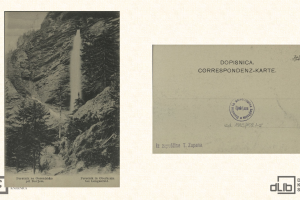After the glacier retreated from the Vrata valley, the Peričnik stream began to fall from the overhanging side valley over the conglomerate wall.
Peričnik is the name of the waterfall and the stream that flows into the Triglavska Bistrica stream near the Koča pri Peričniku. The formation of the waterfall is linked to the glacial transformation of the Vrata valley. The valley through which the Peričnik flows is a so-called hanging valley above the deeper, larger Vrata valley. Water erosion has created two waterfalls - the Upper and Lower Peričnik. The upper part of the Lower Peričnik consists of conglomerate, while the lower part is dominated by crumbly breccia, which has also formed potholes, allowing a path to be made around the waterfall.
The path behind the waterfall
The Peričnik waterfall is destroying itself, as the power of the water undermines the conglomerate sill, which is crumbling and crumbling. The power and magnitude of the water erosion can be experienced up close, because with the right footwear and care, the waterfall can be approached from behind.
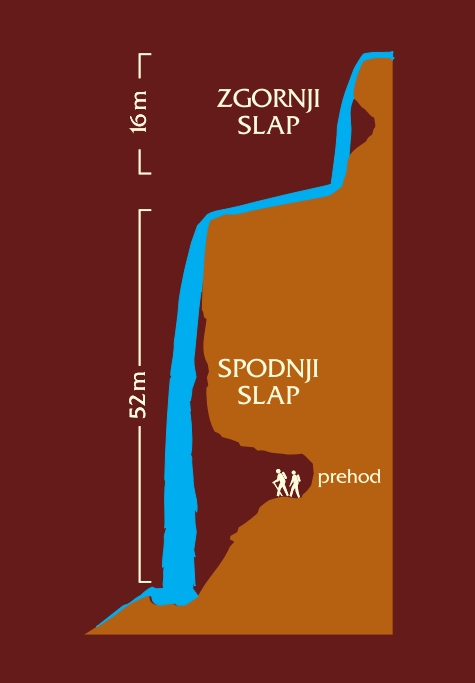
“.. wise nature … bestows … upon the Gorenjska region healthy, clean air and springs that bubble forth from the rocks in their crystal-clear beauty, their coldness stronger than snow; yes, some of them are so cold that one can hardly keep his hand in the water.“
Janez Vajkard Valvasor (1689)
Awesome power of water
Waterfalls help us understand the processes that are continually reshaping the Earth’s surface. The vertical water drops make their eroding power particularly impressive. As a retreating waterfall, the Peričnik gradually eroded the soft rock at the base, gradually undercutting the more resistant conglomerate overhang until it collapsed under its weight, shattering into large conglomerate blocks that now lie at the waterfall base.
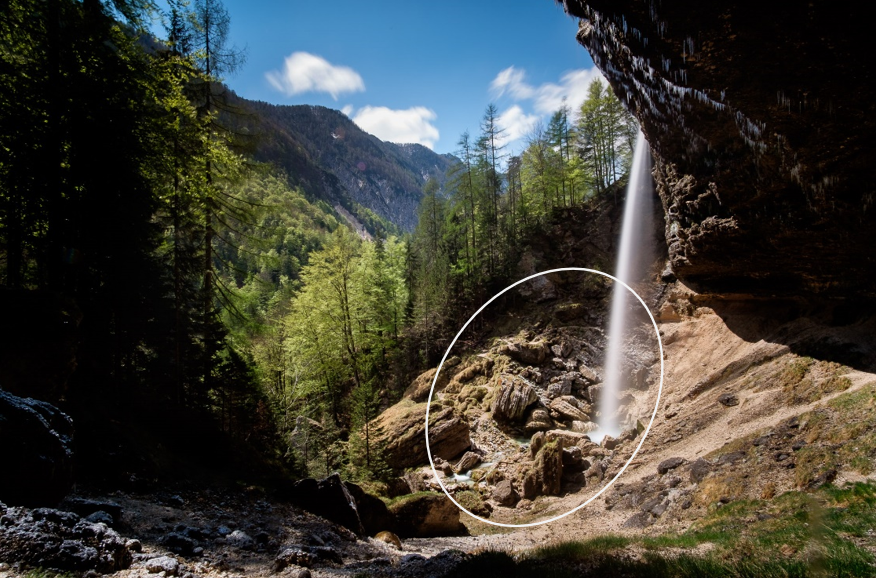
In the past, the waterfall moved several times as the river feeding it changed its course. Fossil notches in the conglomerate cliff are reminders of the waterfall’s past.
